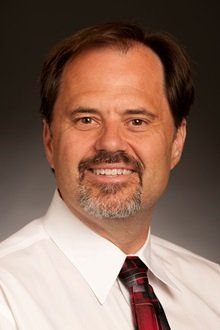Migraine guideline update focuses on early treatment and lifestyle changes
Early treatment in acute migraines is important, but behavioral and lifestyle changes may be the best prevention tool in the pediatric population.
Andrew Hershey, MD, PhD, FAHS

Migraine management in pediatrics can be difficult, but new guidelines reiterate the importance of early intervention, as well as a multi-faceted prevention and treatment plan.
The guidelines, developed by the American Academy of Neurology and the American Headache Society, summarize more than a decade’s worth of new research and are the first update since 2004. Andrew Hershey, MD, PhD, FAHS, endowed chair and director of neurology, headache medicine specialist, and professor of pediatrics at Cincinnati Children’s in Ohio, helped develop the guidelines and says more studies are addressing gaps in pediatric migraine care.
“The treatment and management of children and adolescents with migraine has greatly advanced over the past 15 years, since the 2004 guidelines. Acute treatments with nonsteroidal anti-inflammatory drugs (NSAIDs) and triptans have growing evidence of the efficacy and importance of early treatment, while avoiding medication overuse,” Hershey says. “Preventive therapies are more complex, as children and adolescents will respond to both medication and placebo. This is likely due to the expectation response. The combination of cognitive behavioral therapy (CBT) and amitriptyline had the best evidence of efficacy for chronic migraine.”
One to 3% of children aged 3 to 7 years have migraines, and prevalence increases with age, to 4% to 11% in 7- to 11-year-olds, and 8% to 23% by age 15 years, according to the guidelines. Often, behavioral and lifestyle changes are enough to prevent headaches, but more intervention is required with headaches increase in severity and frequency.
The clinical practice guidelines published in Neurology on acute migraine treatment focus on early intervention. Early use of ibuprofen and acetaminophen in children and adolescents, or triptans in mainly adolescents, are all showing positive results for migraine pain relief.
“These guidelines address the importance of early acute treatment with NSAIDs or over-the-counter drugs, with triptans added in the combination therapy approach,” Hershey says. “Prevention requires a multi-pronged approach that includes healthy habits, CBT with amitriptyline for chronic migraine, and consideration of other preventive medications with the caveat of high expectation response in children and adolescents.”
Specific advice on which medications to use is more of a gray area, the guidelines reveal. Rather than offering a blanket recommendation, the guidelines suggest that clinicians offer treatment based on the patient’s particular symptoms, as there are inconsistent levels of evidence for the various pharmacologic treatment options. The guidelines offer an overview of several pharmacological interventions for acute migraine, as well as advice on counseling patients about lifestyle factors that can exacerbate or trigger migraines.
Additionally, there are recommendations on CBT, and counseling and education on headache prevention for children and their families. The report also discusses chronic migraines-occurring more than 6 times per month-and cautions about medication overuse headaches that can result from using various pain relief medications, like over-the-counter analgesics, for more than 2 weeks.
A second report, with guidelines specific for pharmacologic interventions for migraines, were crafted using research from 2003 to 2017 and, like the clinical practice guidelines, suggest that counseling on lifestyle and behavioral factors remain the best prevention for migraines in children and teenagers. Clinicians should use shared-decision making with parents and patients regarding medication use, as there was insufficient evidence that many of the top medications-divalproex, onabotulinumtoxinA, amitriptyline, nimodipine, or flunarizine-were any more effective in the pediatric population than placebos, according to the guidelines. The recommendations note, however, that children who used propranolol for migraine treatment had at least a 50% reduction in headache frequency compared to those who used a placebo.
When asked whether biologics, which are being used more often for migraine treatment in adults, were considered in these guidelines, Hershey says it’s still a new area for pediatrics.
“The studies are just beginning to be addressed,” he says. “Studies that address this question should be completed within the next 5 years.”